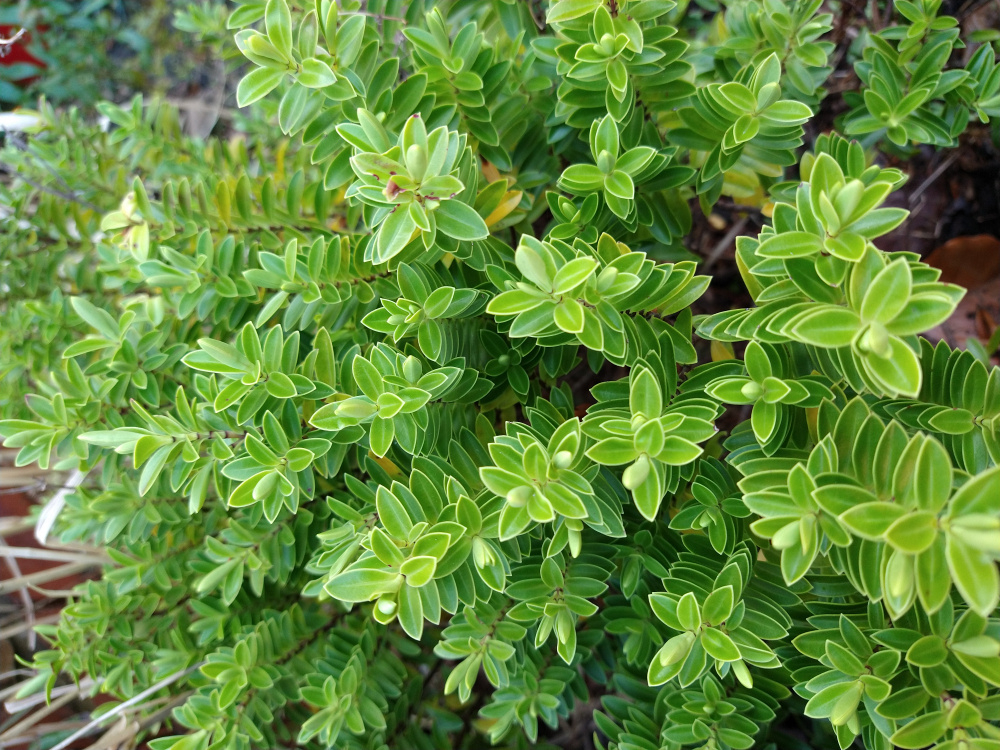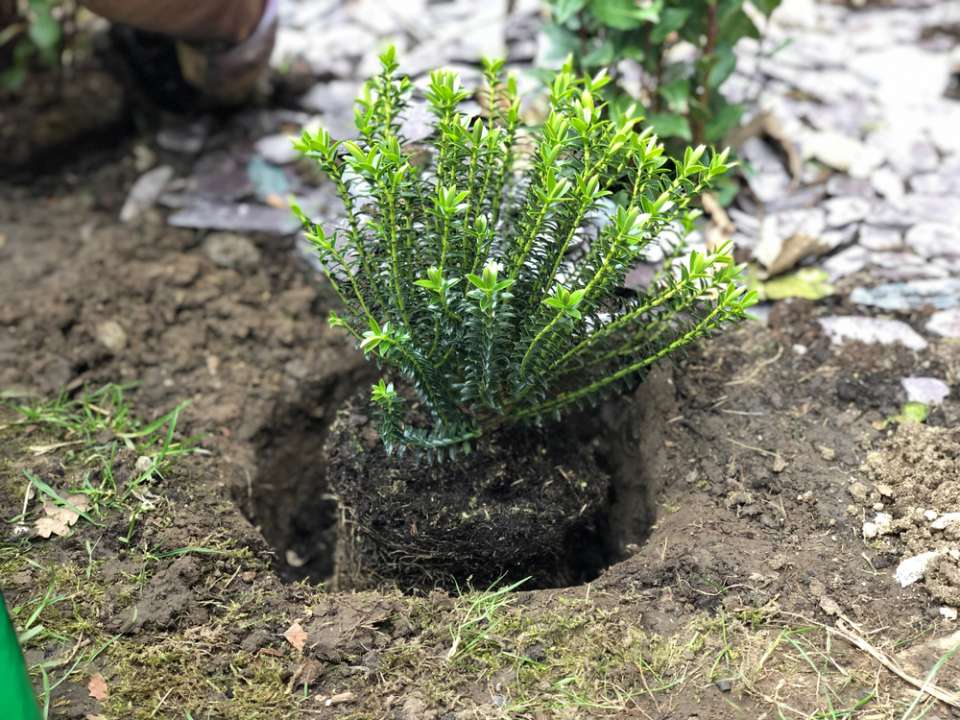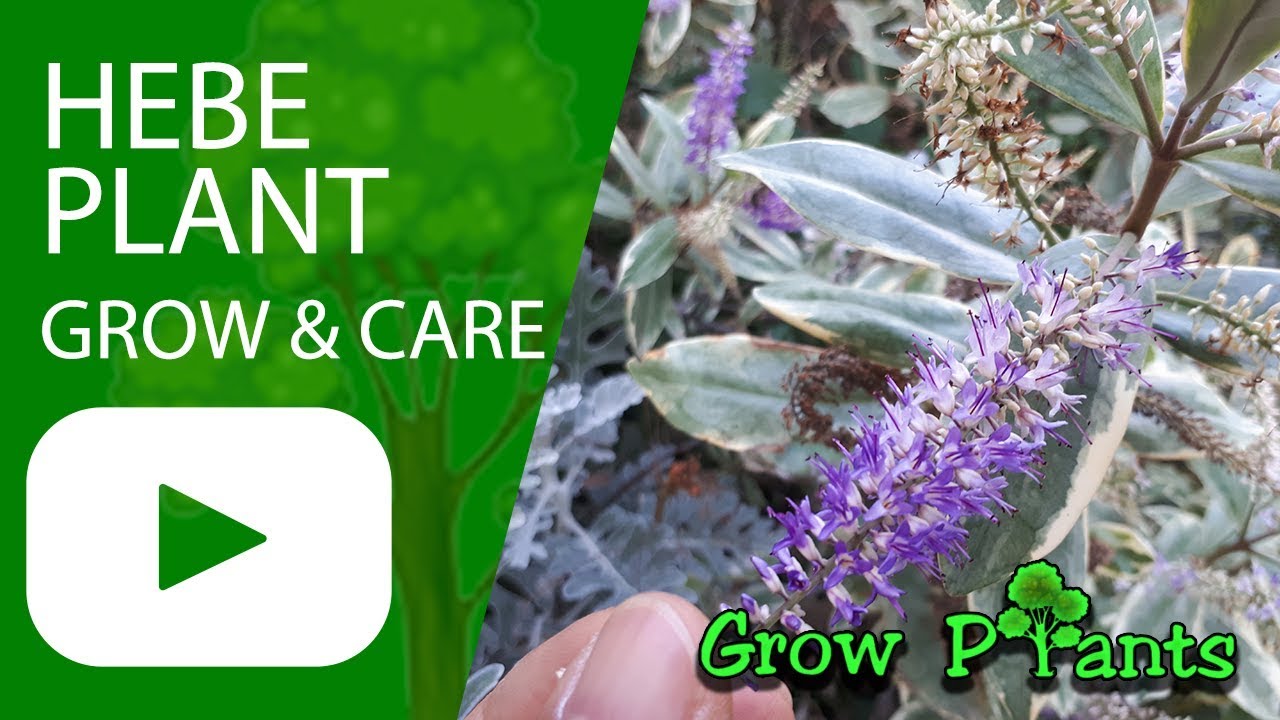Incorrect pruning is the most frequent cause of a non-flowering hebe. Hebes can lose their flower-producing growth if they are trimmed back too severely or at the wrong time of year, delaying their flowering until the following year.
Plant your hebe in full sun, on soil that drains well, and that has been heavily mixed with compost. After flowering, only lightly clip the plant (note that annual pruning is not always necessary).
Hebes can also be prevented from blossoming by too much nitrogen when the soil is amended with manure or fertilizer.
Continue reading to find out what has prevented your hebe from flowering and what you can do to guarantee a good flower display the next year.
Table of Contents
Excessive Pruning Can Prevent Hebe Flowering
The following are the most frequent causes of hebes not flowering:
- cutting back the hebe too severely into old growth.
- Hebes being pruned in the incorrect season.
- Hebes become woody, less prolific, and produce fewer flowers if they are not pruned for a long time.
Hebes are flexible, low-maintenance plants that typically flourish when given little to no attention.
However, when it comes to pruning, they do need extra attention.
The hebe’s ability to bloom the following year will probably be hampered by excessive pruning back into the old woody growth.
Depending on how severely it has been clipped, the hebe usually either tends to die off or it can encourage new green growth in the summer without blooms.
Hebes should also be cut back right away after blossoming. You risk removing the growth on which the hebe should bloom if you prune too late in the fall or early in the spring.
Hebes don’t necessarily require annual pruning in the same way that roses do, but if you let them grow for years without trimming, they tend to become lanky and unproductive in terms of producing foliage and showing off blossoms.
Hebes should be softly pruned back immediately after flowering if you want to ensure that it keeps a good form and blooms in the late summer or fall.
Avoid trimming the timber and just remove the green, supple, more flexible growth.
This gives the hebe enough time to recover from pruning before winter and enables the plant to grow in the spring without interference so that it is prepared to bloom in the summer.
I would advise against pruning your hebe if you have missed the ideal window for doing so (immediately following flowering), in order to preserve its ability to bloom the following summer.
Hebes don’t always need to be pruned annually, but neglecting them for an extended period of time might cause them to become unproductive and develop woody, which produces fewer flowers.
Once they have gone woody and over grown it is difficult to resuscitate the hebe.
Hebes, however, much prefer a little and often approach to pruning. Some hebes can tolerate a harsh prune back to the wood to make a better shape, and once it has recovered, develop new growth and finally flower.
Not Enough Light for Flowering (6+ hours of sun is Optimal)
Less sunshine is still sufficient for them to survive and produce flowers, but the less sunlight there is, the less energy the plant has to produce blossoms in the summer.
The hebe is likely to have fewer stems, leaves, and flowers if it receives too much shade.
Try to trim back any overhanging tree branches that may be throwing shade on your hebe or even trim back foliage from nearby plants that may be crowding the hebe in order to give it more light and enhance the quantity of blossoms.
It is best to move the hebe to a spot with more sunlight if it is completely shaded; otherwise, the plant won’t likely flower as much as it could.
Hebes should be transplanted in the spring or fall to give the roots time to grow in the soil without being subjected to the summer heat and full sun.
Before planting, check that the soil in your garden drains well and add compost to the area to help the plant retain moisture since it may be more susceptible to drought just after it is planted.
The hebe might not flower as well the following year because it can take some time for it to get used to a new place, but once it has, it should flower quite well the following year.
Hebe Not Flowering After Planting
After planting, hebes may not always bloom to their full potential in the summer.
Hebes that don’t bloom after planting could be the result of:
- Transplant shock can occur because the environment in your garden and the area where the hebe was grown can differ significantly.
- Even under ideal circumstances, hebes need time to develop in new soil. Hebes frequently focus their energy on growing roots that adapt to the environment rather than blooming the first year.
While there is little you can do to encourage blossoms besides wait for the hebe to acclimate to its new environment, using the best practices of care should assist to lessen any transplant shock:
- In the first year after planting, water the hebes as often as necessary to keep an evenly moist (but not saturated) soil in order to prevent the plant from drying out as the roots grow and establish in the soil.
- To add nutrients and retain moisture, apply a layer of mulch around the hebe and amend the soil with compost before planting (leaf mould, or more compost are ideal materials for mulch).
- Hebe should be planted in sunny, well-draining soil (avoid heavy clay and boggy areas).
- During the first year, avoid pruning.
When the hebe is more established, a year after planting, with the proper care techniques and some patience, it should flower well.
Heavy Clay Soil Can Impact Flowering
If hebes are planted in clay soil, plants may have trouble flowering because:
- Clay soils have a sluggish rate of drainage, which leads to soggy conditions and raises the possibility of root rot.
- For the hebe plant’s roots to spread out and flourish, clay can bake too hard and become too compacted.
The hebe is probably too stressed to produce flowers if it must deal with heavily compacted clay soil or bog conditions.
By planting hebe in pots, containers, or raised beds rather than garden borders, you can avoid putting it in thick clay.
The hebe can, however, grow in clay soil if you prepare a sizable planting hole and add a lot of compost to enhance the drainage and soil structure and make the environment more favorable for the hebe.
As long as the soil is evenly wet and not swampy, the hebe should grow and flower better in an area that has been amended with compost.
Too Much Fertilizer for Flowering
Hebes are not very heavy feeders and do not require frequent fertilizer to flower at their best. An oversupply of nutrients (Nitrogen in particular) can inhibit your hebe from blossoming.
Hebes don’t need additional fertilizer to bloom if they are planted in well-prepared soil with lots of organic matter and receive the occasional spring mulch.
In fact, plants frequently bloom better in soil that has good drainage and isn’t very nutrient-rich.
If you have added fertilizer made of high-nitrogen organic material (poultry manure), reduce the amount of fertilizer you use and wait until the following year for the nitrogen concentration to fall so your hebe may flower properly. In the meantime, take pleasure in the lush foliage!
In the spring, you can re-balance the nutritional profile in the soil for flowering by applying a tomato feed to the soil surrounding your hebe (which contains potash, which helps promote blossoms).
Key Takeaways:
- Hebes frequently don’t bloom because they are pruned at the wrong time of year. If hebes are pruned in the spring, the growth that the hebes use to exhibit their blossoms is removed. Hebes do not flower unless they are in full light and properly draining soil.
- Hebes frequently do not bloom the first year after planting because their energy is diverted from blossoming to establishing roots and growing.
- Hebes require well-draining soil; they do not thrive in compacted clay soils that drain slowly. Compost can be added to the soil to help with drainage and soil structure.
- Hebe plants may develop foliage without many flowers if they receive too much nitrogen in the form of high nitrogen fertilizers, manure used as mulch, or other nitrogen-rich soil amendments.
FAQ
How do you rejuvenate a hebe?
As soon as the flowers have faded, prune the hebes. This gives the new growth plenty of time to mature before the cold weather arrives. Remove the dead flower heads with secateurs, then trim the foliage back by up to a third. Cutting it back severely will frequently revive a plant that has grown “leggy” and exhausted.
Can you cut back hebes hard?
Hebes typically require little pruning, but if they start to get lanky, they can be severely pruned to shape them again (this is also worth a go if flower production is poor). The optimal time to prune them is just when winter begins to loosen its hold but before springtime new growth breaks forth.



